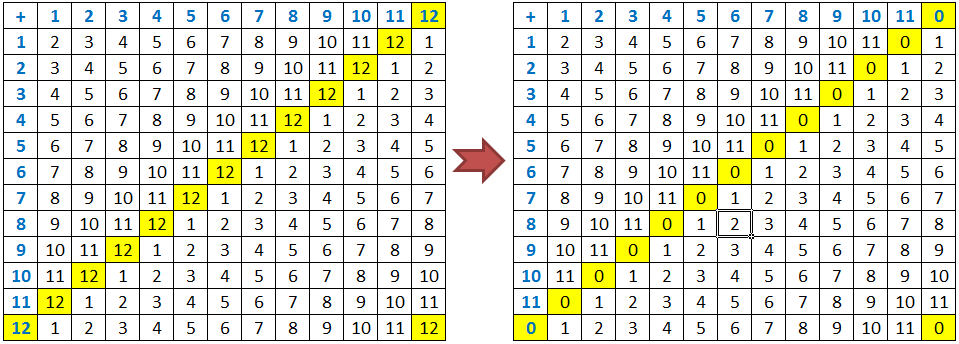Introduction to Number Bases
In Clock Arithmetic and Modular Systems, we have learned about a different number system, a number system whose largest digit is 12. We observed that in that system, we can only use the numbers 1 through 12. We also noticed that 12 acts as 0 since 12 added to any number is equal to that number. If we change 12 to 0, we can only use 0 through 11 as digits.
The number system that we use everyday, the decimal number system, uses 0 through 9 as digits. In the decimal number system, if we add 1 to the largest digit which is 9, we add 1 to the number on next place value and write 0. For example, 9 + 1 = 10 and 10 means that 1 tens and 0 ones. In the decimal number system, 325 means 3 tens squared (or hundreds), 2 tens and 5 ones. Using the expansion notation, we have
.
From the pattern, we can see that every digit of a number in the decimal system is multiplied by a power of 10. That is why we call it the decimal system; the root word deci means 10. We are probably using base 10 because we have 10 fingers. If human’s fingers were 8, we would have probably chosen a number system with base 8.
If we apply the principle above to the clock number system, its base will be 12. Again, we use the digits 0 through 11 in this system. To distinguish this number system from base 10, we denote it by placing the base as a subscript. For instance, 693 to base 12 is written as . In expanded form,
The numbers 10 and 11 are considered as a single digit in base 12 but has 2 digits. This can be confusing. For example, we may interpret as
and
.
In order to avoid confusion, we can use different symbols for both digits. We can use A for 10, and B for 11 (or any symbols we want). Using the letters, the first case can be written as and the second as
.
The most familiar number system that uses this strategy is the hexadecimal system (base 16). The hexadecimal system uses 0-9 as digits, and letters A to E to 10-15. That means that in the hexadecimal system, means
since F = 15 and A = 10.
Different number bases or number systems are used in many branches of mathematics. The binary system, for instance, is used by computers to transfer data. The hexadecimal system is used to denote colors. Some number systems, particularly those which are related to prime numbers, are used in cryptography.
